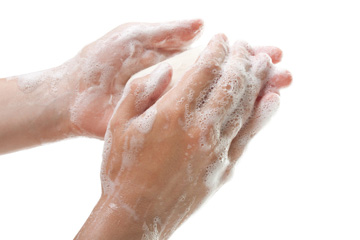 The World Health Organization (WHO) has designated May 5th as World Hand Hygiene Day, to raise awareness about hand hygiene and how clean hands can prevent the spread of infections in more ways than we think. This year’s theme is ” Clean care for all – it’s in your hands “, and the focus will be on the importance of good hand hygiene practices as part of improving patient safety globally to achieve universal health coverage (UHC).
The World Health Organization (WHO) has designated May 5th as World Hand Hygiene Day, to raise awareness about hand hygiene and how clean hands can prevent the spread of infections in more ways than we think. This year’s theme is ” Clean care for all – it’s in your hands “, and the focus will be on the importance of good hand hygiene practices as part of improving patient safety globally to achieve universal health coverage (UHC).
According to the WHO, hand hygiene day is the global movement to achieve UHC, i.e. achieving better health and well-being for people of all ages, ensuring financial risk protection, access to essential healthcare services and to safe, effective, quality and affordable essential medicines and vaccines. Infection Prevention and Control, including hand hygiene, is critical to achieve UHC as it is a practical and evidence-based approach with demonstrated impact on the quality of care and patient safety across all levels of the health system.
The WHO’s calls to action for 2019 are as follows:
- Health workers: “Champion clean care – it’s in your hands.”
- IPC leaders: “Monitor infection prevention and control standards – take action and improve practices.”
- Health facility leaders: “Is your facility up to WHO infection control and hand hygiene standards? Take part in the WHO survey 2019 and take action!”
- Ministries of health: “Does your country meet infection prevention and control standards? Monitor and act to achieve quality universal health coverage.”
- Patient advocacy groups: “Ask for clean care – it’s your right.”
Proper and effective hand hygiene is the most helpful action to reduce healthcare-associated infections, because most healthcare-associated infections are preventable through good hand hygiene – cleaning hands at the right time and in the right way.
It’s important for you to practice good hand hygiene and understand when to wash your hands, how to properly use hand sanitizer and how to get your children into the habit.
According to Mayo Clinic, always wash your hands
| Before | After |
| Preparing food or eating | Preparing food |
| Treating wounds or caring for a sick person | Using the toilet or changing a diaper |
| Inserting or removing contact lenses | Touching an animal, animal feed or waste |
| Blowing your nose, coughing or sneezing | |
| Treating wounds or caring for a sick person | |
| Handling garbage |
And also, wash your hands when they are visibly dirty.
Whenever you wash your hands, make sure to wash with normal soap and water and skip antibacterial soaps, because such soaps containing triclosan, are no more effective at killing germs than is regular soap. Moreover, they might even lead to the development of bacteria that are resistant to the product’s antimicrobial agents — making it harder to kill these germs in the future.
The next important thing is to know how to wash your hands neatly and for that follow these steps:
- Wet your hands with clean, running water – either warm or cold.
- Apply soap or hand liquid to a cupped hand.
- Lather your hands by rubbing them together with soap. Rub palm to palm, the backs of your hands, between your fingers, wrists and under your nails for at least 20 seconds.
- Rinse well under running water.
- Dry your hands with a clean towel or air dry them.
However, sometimes, when soap and water aren’t available, you could use alcohol-based hand sanitizers, which don’t require water, but when you use a hand sanitizer, make sure the product contains at least 60 percent alcohol.
Not only adults, children should also be encouraged to practice good hand hygiene. Make them understand that washing hands plays a major role in protecting their health, and teach them how to properly maintain hand hygiene.